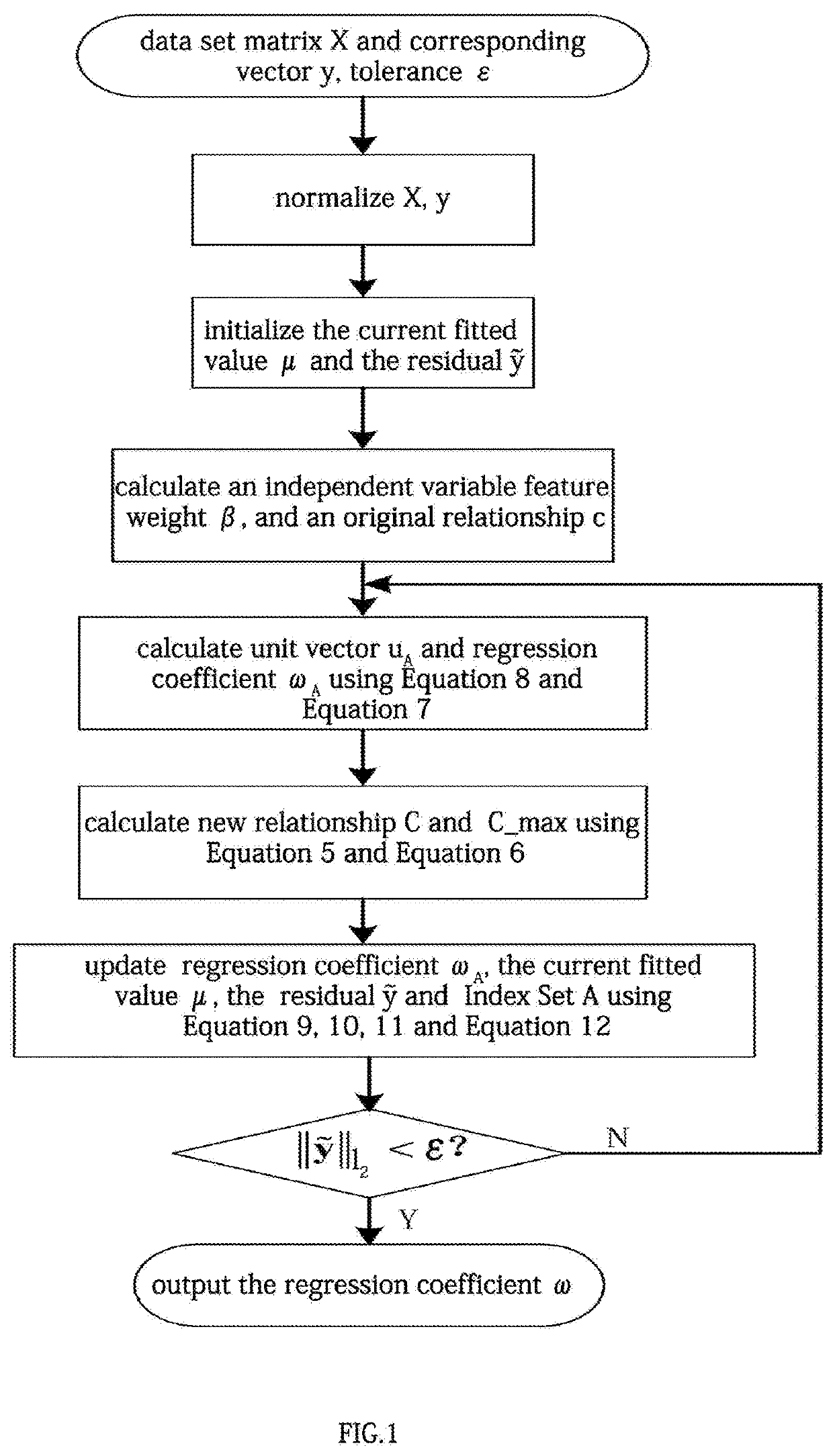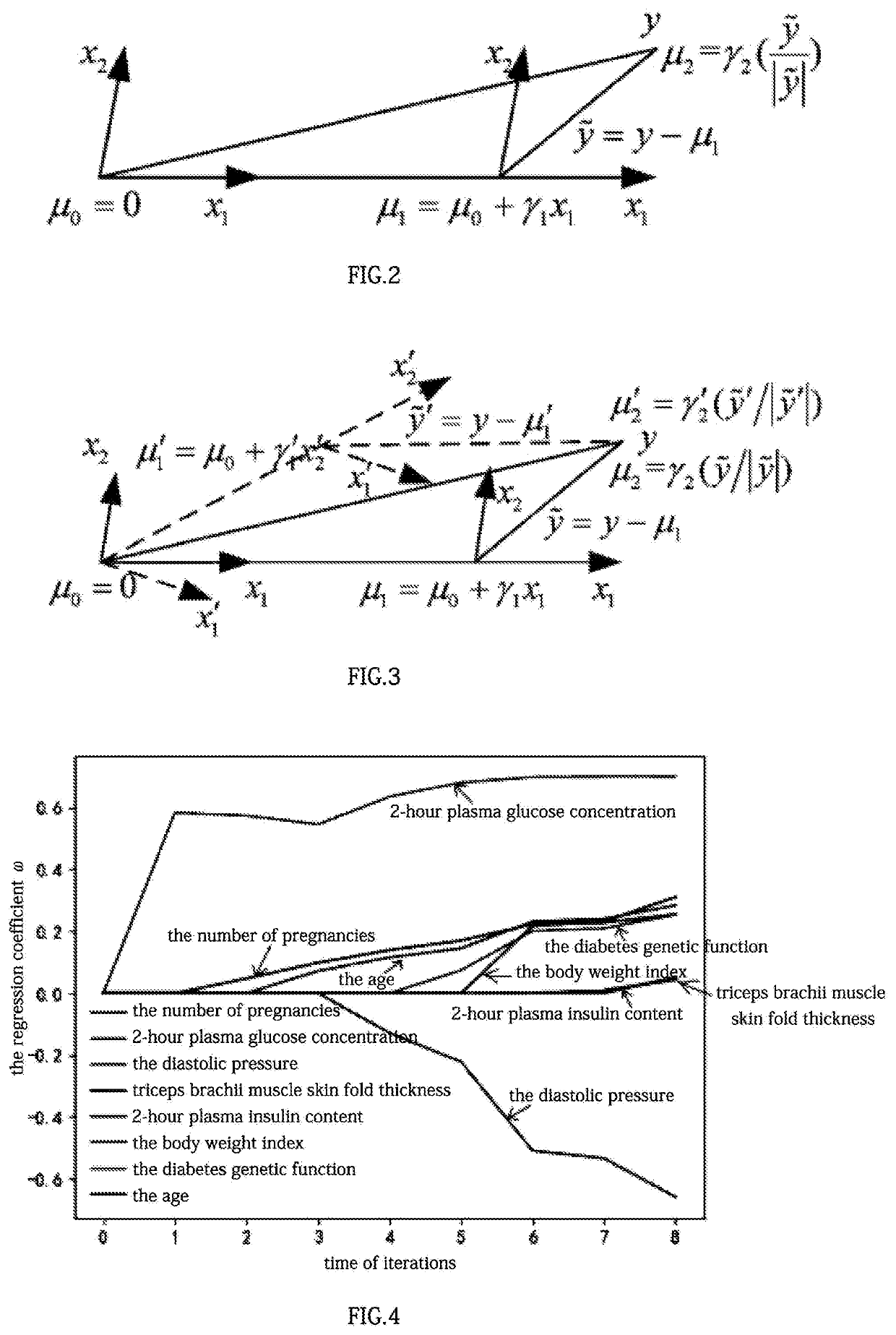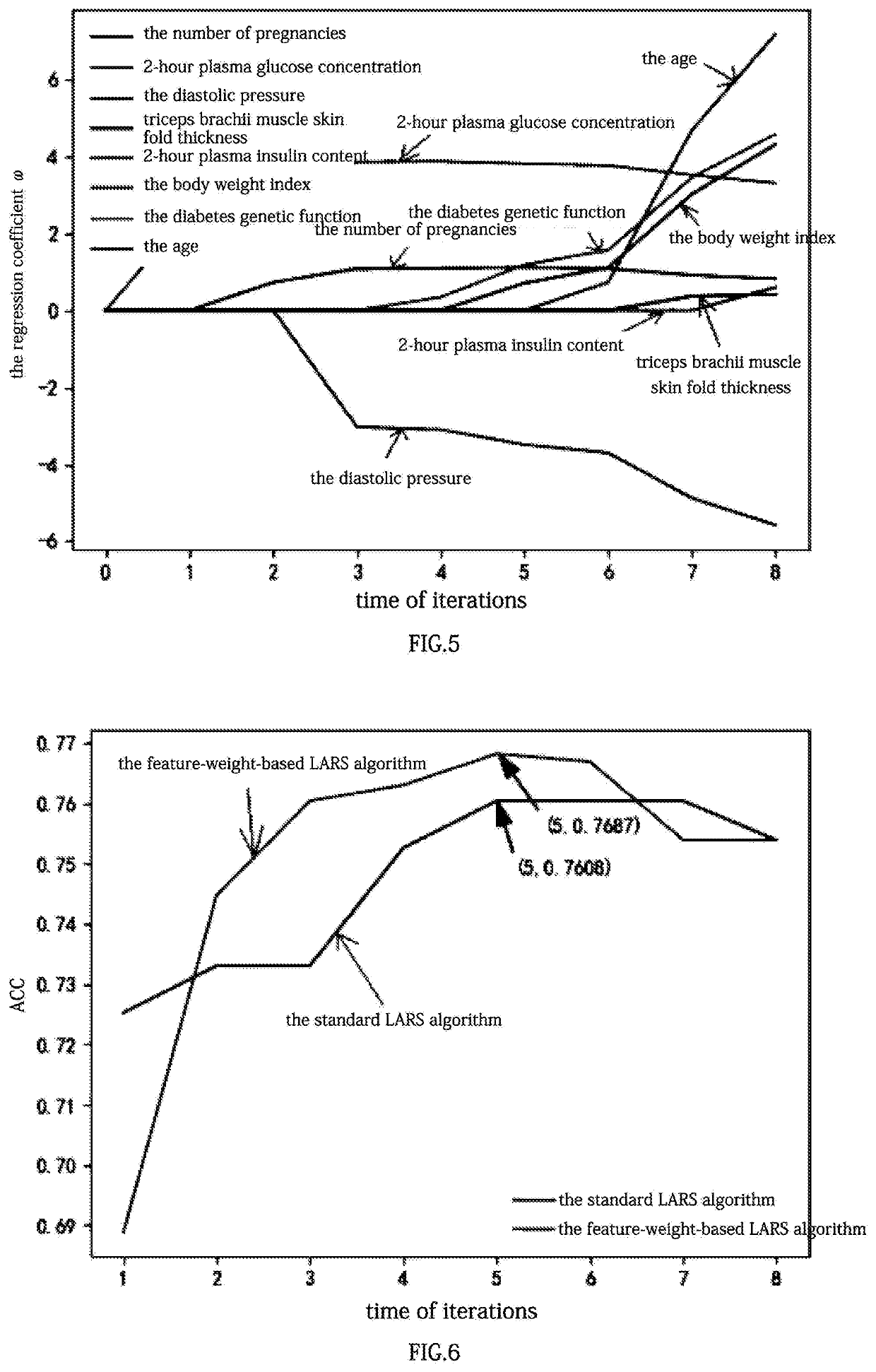Diabetes risk early warning system
- Summary
- Abstract
- Description
- Claims
- Application Information
AI Technical Summary
Benefits of technology
Problems solved by technology
Method used
Image
Examples
embodiment 1
[0024]According to machine learning and PCA (Principal Component Analysis) theories, a multidimensional sample usually has a few key features or principle components. Among the numerous features of diabetes, only a few are key features. Some studies found that prediction models with better generalization ability as represented by key features can be obtained by the use of LARS algorithms. Generalization ability refers to a quality with which a trained network can produce suitable output even if the input is not a sample set. The machine learning algorithm is realized using a linear regression algorithm. However, over-fitting is an unavoidable issue in use of a linear regression algorithm. The more a model is trained, the more the model matches the training data, and gradually loses its ability to predict when processing new data. Problems of using conventional LARS algorithms to figure Lasso regression coefficients include slow approaching and poor accuracy. In addition, since the i...
embodiment 2
[0055]The present embodiment provides further improvements to the feature-weight-based second processor 2 of Embodiment 1, and what is identical to its counterpart in the previous embodiment will not be repeated in the following description. Specifically, the present embodiment provides a diabetes early warning system, the system at least comprises a second processor 2 as described in Embodiment 1, a memory coupled to the processor, and an interface 5 therebetween.
[0056]The diabetes early warning system is applicable to rehabilitation exercise risk management for patients highly susceptible to diabetes.
[0057]Referring to FIG. 8, the diabetes early warning system at least comprises a sensor module, a second processor 2 and an exercise-regimen-adjusting module. The sensor module is configured to collect initial data of the diabetes early warning system, system parameters and user data related to the user. The second processor 2 is configured to identify user exercise diabetes risk bas...
embodiment 3
[0070]Referring to FIG. 8, the Pima diabetes data set is used herein. In view that the existing k-means algorithm uses initial clustering centroids that are randomly selected and tends to produce inconsistent clustering results, selection of initial clustering centroids has to be such improved that the selected centroids fall in central portion of individual clusters. Therein, the Pima diabetes data set refers to the Pima Indian Diabetes data set in the machine learning database maintained by University of California, Irvine (UCI) as extensively applied by the public.
[0071]The system of the present invention serves to build a diabetes prediction model. The system at least comprises a memory and a first processor 1. The first processor 1 is coupled to the memory and is configured to execute at least one step of a diabetes early warning method based on improved k-means clustering. Therein, the diabetes early warning method based on improved k-means clustering at least comprises at lea...
PUM
 Login to View More
Login to View More Abstract
Description
Claims
Application Information
 Login to View More
Login to View More - R&D
- Intellectual Property
- Life Sciences
- Materials
- Tech Scout
- Unparalleled Data Quality
- Higher Quality Content
- 60% Fewer Hallucinations
Browse by: Latest US Patents, China's latest patents, Technical Efficacy Thesaurus, Application Domain, Technology Topic, Popular Technical Reports.
© 2025 PatSnap. All rights reserved.Legal|Privacy policy|Modern Slavery Act Transparency Statement|Sitemap|About US| Contact US: help@patsnap.com



